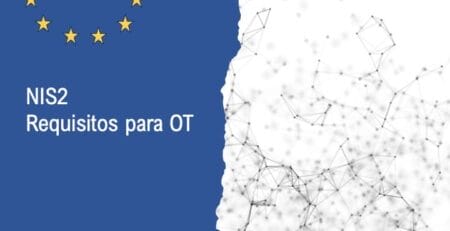How to assess OT cyber risks and protect operations?
How to assess OT cyber risks and protect operations?
When assessing cyber risks in operational technology (OT) systems, operations in Industry and protecting operations is a critical process that involves identifying threats, assessing vulnerabilities and applying appropriate mitigation measures. Here is a structured approach to conducting this assessment and protection:
1. OT Cyber Risk Assessment
a. Asset Identification
- Asset Inventory: Create and maintain a complete inventory of all OT assets, including hardware, software, networks, and industrial control systems (ICS).
- Asset classification: Classify assets according to their critical importance to operations and the potential impact of their compromise on safety.
b.
Identification of Threats
Internal Threats: We have to consider them and they are common, such as human error, unauthorized access by employees or contractors.
External Threats: Assess external threats, including malware, ransomware, targeted attacks, and advanced persistent threats (APTs).
c.
Vulnerability Assessment
Vulnerability Analysis: There are nowadays different TESTs to have a clear vulnerability analysis report, identify weaknesses in OT systems and networks.
Penetration Testing: Conduct periodic penetration tests to simulate attacks and evaluate the ability of systems to withstand them.
d.
Impact Assessment
- Impact on Physical Security: We can consider how a cyber incident could affect the physical security of facilities and personnel.
- Operational Impact: Assess the potential impact on operations, including interruptions in production, damage to equipment, and loss of data.
- Economic Impact: Calculate the financial impact of potential incidents, including remediation costs, lost revenue and regulatory fines.
2. OT Operations Protection
a. Segmentation and Access Control
IT and OT Network Segmentation: Divide the OT network into segments to isolate critical systems and limit the spread of threats.
Have Role-Based Access Control (RBAC): Implement role-based access controls to ensure that users have only the necessary permissions.
Multi-Factor Authentication(MFA): Use multi-factor authentication for all access to critical systems.
b.
Monitoring and Detection
- Continuous Monitoring: Implement continuous monitoring solutions to detect suspicious activities in real time.
- Intrusion Detection Systems(IDS): Use IDS to identify and alert about possible intrusions in the OT network.
- Behavioral Analysis: Implement behavioral analysis to detect anomalies in network traffic and user activities.
c.
Resilience and Recovery
- Incident Response Plan: Develop and maintain an incident response plan that includes clear procedures for incident detection, containment, eradication and recovery.
- Data Backup and Recovery: Perform regular backups and test data recovery procedures to ensure that critical data can be restored quickly.
- Redundancy and Business Continuity: Implement redundancy in critical systems and develop business continuity plans to maintain operations in the event of a cyber incident.
d.
Data Protection and Communications
- Data Encryption: Encrypt data in transit and at rest to protect the confidentiality and integrity of information.
- Secure Communication Protocol: Implementing secure communication protocols, such as TLS and VPN, helps to protect data transmissions.
e.
Training and Awareness
Staff Training: Provide ongoing cybersecurity training to OT staff to increase awareness and incident response capability.
Incident Simulations: Conduct incident response simulations and drills to prepare personnel for potential attacks.
3. Review and Continuous Improvement
a. Regular Audits and Evaluations
Safety Audits: Conduct regular safety audits in the industrial chain to evaluate the effectiveness of protection measures and detect possible areas for improvement.
Risk Assessments: Regularly review and update the risk assessment to reflect changes in the threat environment and OT infrastructure.
b.
Update of Policies and Procedures
Policy Review: Think of a constantly improving environment where the importance of reviewing and updating security policies and operating procedures as needed has a place.
Implementation of Best Practices: Adopt and adapt industry best practices and standards to strengthen the security posture.
Conclusion
Assessing cyber risks and protecting operations in OT environments requires a comprehensive and systematic approach that addresses all aspects of cybersecurity. From identifying assets and threats to implementing access controls, continuous monitoring, and incident response plans, each step is crucial to ensuring the resilience and protection of industrial systems.
Continuous training and continuous improvement are essential to maintain a robust security posture in the face of evolving cyber threats. Universities and institutes bring value to this endeavor.











